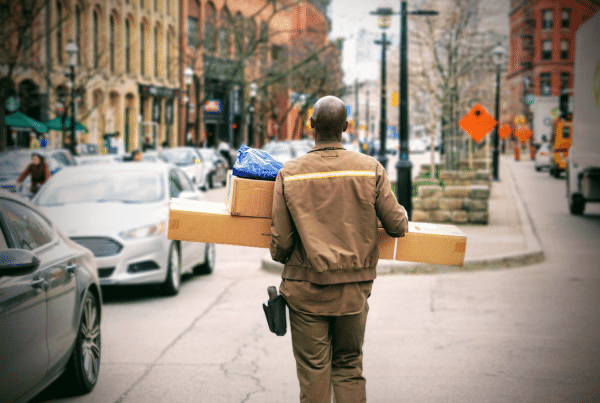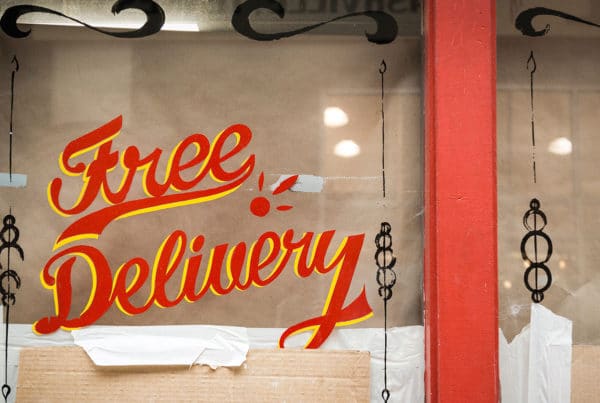Have you ever clicked away from an online store just before completing your purchase? For many consumers, high shipping costs are a significant factor in that decision.
But here’s the real challenge: consumers don’t just want affordable shipping. They want it all. Fast, free, flexible—and ideally with sustainable options too. Yet when it comes time to pay, most shoppers aren’t willing to absorb the cost. Instead, the bill lands squarely in the hands of the merchant.
This is the growing tension in e-commerce today. Retailers are expected to meet rising consumer expectations without increasing prices, delaying delivery, or compromising service. Flexibility has become the baseline, not a differentiator.
That’s why delivery costs have become more than a checkout detail; they’re a strategic pressure point. As our latest E-commerce Delivery Compass 2025 survey of 8,000 consumers across 8 European markets reveals, it’s also where the greatest opportunities lie.
Let’s dig in.
Key findings |
|
The hidden cost that drives customers away
Your customer is excited to buy. They’ve chosen their products and clicked their way to the checkout page. Suddenly, their excitement turns to frustration as unexpected shipping costs appear. According to our survey, high delivery costs are the leading reason (66.3%) why consumers abandon online shopping carts.
This isn’t just a global trend. Specific markets like Germany (57.1%), France (54.8%) and Italy (52.7%) demonstrate even higher sensitivity. Additionally, shoppers actively compare delivery costs across various websites, especially in Italy and Spain.
Low delivery speed (43.7%) and bad past delivery experiences (25.8%) followed closely behind, showing that cost is not the only factor merchants need to address. Moreover, 21.9% of the respondents would abandon the shopping cart if shops don’t offer convenient delivery options.
Inflation is changing how consumers view delivery costs
Inflation has dramatically reshaped consumer attitudes. Today, nearly 70% of online shoppers say they are more price-sensitive than they were before. This increased sensitivity particularly impacts their view of delivery costs.
A strong 78.5% of consumers globally prefer cheaper delivery fees, even if it means waiting longer. Merchants who clearly communicate slower yet significantly cheaper shipping options have a great opportunity to win these price-conscious consumers.
So what can you do in this case? It’s clear that tackling shipping costs means more than just lowering fees. It’s about aligning with what customers actually value. That begins with one of the strongest levers at your disposal: free shipping.
The psychological power of “free delivery”
Free delivery isn’t just a perk, it’s a powerful psychological incentive. When customers see the word “free” next to delivery, it removes a key point of friction that often causes them to drop out of the checkout process.
Our survey reveals that 82% of shoppers globally would rather get free delivery than faster shipping options or special customizations like choosing their delivery times or preferred carriers.
This strong preference is consistent across most countries. However, Italy is an exception, as consumers there value sustainable delivery options (CO2-neutral) almost as much. This trend indicates a growing awareness of environmental impact and presents a potential opportunity for brands that can successfully combine value with responsibility.
How free shipping thresholds drive extra sales
Setting a smart free shipping threshold can significantly boost your average order value. Our survey found that globally, 70.5% of shoppers are likely to add extra items to reach the free delivery threshold.
This behavior is particularly strong in Southern Europe, especially in Spain (79.9%), Italy (77.3%) and France (74.3%).
Consumers are highly motivated to spend more when a free shipping threshold is in place. Align your free shipping threshold strategically.
Globally, online consumers expect free shipping at around €28. Adjust thresholds based on local market expectations, with Spain and the UK preferring lower amounts (€24), and France expecting a higher threshold (€33.50). Think about how much your typical order is worth when you’re deciding where to set the free shipping bar.
Premium Delivery: A missed opportunity?
Offering free delivery is powerful, but it’s not a one-size-fits-all solution. Consumers today expect multiple delivery options tailored to their personal preferences. This means flexibility in delivery isn’t just appreciated; it’s increasingly expected.
Our research indicates that although most online shoppers prefer free shipping, a significant portion —over 40% globally —are willing to pay extra for premium delivery services, such as next-day or even same-day delivery. This demonstrates clearly that while affordability attracts customers, convenience and flexibility can convert them.
On average, shoppers are willing to pay about 9% of the total order value (€4.30 on a €50 purchase) for next-day delivery.
However, this varies by market. Belgian consumers show high flexibility in paying premiums, willing to spend up to 10% more for faster delivery, whereas Spanish consumers tend to be more conservative, willing to pay around 6% extra.
To effectively tap into this demand for flexibility, your checkout process should clearly present varied shipping options—free vs. fast, home vs. pick-up, sustainable vs. traditional. Offering clearly communicated choices ensures you cater to diverse customer preferences, ultimately boosting conversions by providing customers exactly what they want, when and how they want it.
Practical tips for e-commerce businesses
To recap, here are four practical ways to optimize your delivery strategy:
1. Set smart thresholds
Use free shipping thresholds strategically to encourage higher order values. Many customers are willing to add extra products to their cart to unlock free delivery, especially in Southern Europe. A good rule of thumb to determine your free shipping threshold is to add your average shipping cost to your average order value (AOV).
A good rule of thumb to determine your free shipping threshold is to add your average shipping cost to your average order value (AOV).
Extra tip: You can retarget cart abandoners with an email offering free shipping; this is often an effective way to encourage them to complete their purchase.
2. Offer flexible choices
Customers today expect more than just affordable shipping. They’re looking for speed, free delivery, and various choices. Offering diverse shipping methods, balancing cost with delivery speed, is key. While not every customer requires next-day delivery, having that option significantly enhances the experience for many.
3. Inflation strategy
Inflation has made shoppers more price-conscious. Offer specific, affordable shipping options clearly labeled as slower home deliveries or cost-effective pick-up points. Highlight these alternatives to customers who are willing to wait longer or prefer picking up their orders rather than receiving home deliveries.
Conclusion: Winning the shipping game
Shipping costs play a huge role in online shopping decisions. Understanding and adapting to consumer expectations around free shipping, premium options, and price sensitivity is crucial if you want to reduce cart abandonment and boost customer satisfaction.
Want to stay ahead of delivery trends? Check out our full report for more actionable insights.















